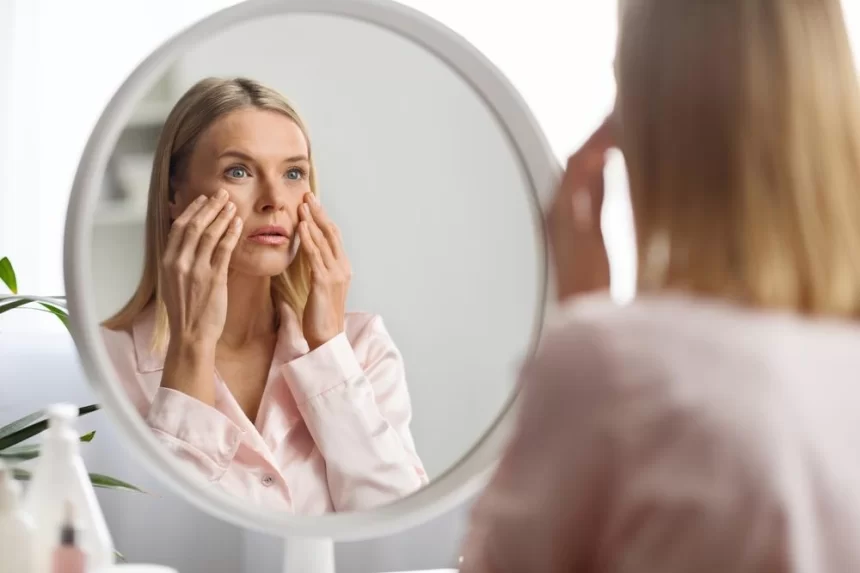How Estrogen Decline Affects Your Skin: 5 Effects and Dermatologist Tips for Relief
The decline of estrogen during perimenopause and menopause changes the appearance and quality of your skin. Learn how to recognize the signs and which steps dermatologists recommend to help ease the symptoms.

🌿 How Estrogen Decline Affects Your Skin: 5 Effects and Dermatologist Tips for Relief
Estrogen is much more than a “female hormone.” It plays a key role in maintaining the health and appearance of the skin, which is why many women notice sudden changes in their face and body during perimenopause and menopause.
Estrogen decline doesn’t only affect the menstrual cycle – it impacts skin moisture, elasticity, and tone, often leading to dryness, sagging, and more visible signs of aging.
Here are 5 common ways estrogen decline affects your skin and what dermatologists recommend to minimize these changes and preserve a healthy, youthful look.
1️⃣ Dryness and Loss of Radiance
A drop in estrogen significantly reduces the skin’s natural oil and hyaluronic acid production. The result is dry, flaky, and rough skin that cracks easily and loses its natural glow.
💡 Dermatologist Tip:
Use moisturizers rich in hyaluronic acid, ceramides, and squalane both morning and night. Add a humidifier to your living space, especially during heating season.
2️⃣ Skin Sagging and Loss of Elasticity
Estrogen stimulates the production of collagen and elastin – key proteins for firm, tight skin. When estrogen drops, the skin becomes thinner, looser, and less elastic, especially around the jawline, neck, and eyes.
💡 Dermatologist Tip:
Introduce retinol, peptides, and vitamin C into your skincare. Regular facial lymphatic drainage massages can help lift and define facial contours.
3️⃣ More Fine Lines and Wrinkles
With less estrogen, skin loses its ability to retain moisture and regenerate, accelerating the formation of wrinkles, especially around the eyes and mouth.
💡 Dermatologist Tip:
Use anti-aging serums with antioxidants, and apply retinoid-based creams combined with SPF during the day. Consider collagen supplements for internal support.
4️⃣ Increased Sensitivity and Redness
Lower estrogen levels can make the skin more reactive, causing redness, itching, burning, and a tendency to become irritated.
💡 Dermatologist Tip:
Switch to gentle, fragrance-free, alcohol-free skincare products. Add thermal water sprays and soothing serums with niacinamide or panthenol.
5️⃣ Pigmentation Changes
Estrogen affects melanin distribution, so its decline can lead to dark spots, discoloration, and uneven tone, especially in women prone to melasma or sunspots.
💡 Dermatologist Tip:
Use tone-correcting creams with azelaic acid, vitamin C, and niacinamide, and apply SPF 30+ daily, even on cloudy days.
🧠 Bonus Tip: Hormonal Balance Is Key
In some cases, dermatologists recommend consulting an endocrinologist or gynecologist about hormone replacement therapy (HRT) as part of a holistic anti-aging skin strategy.
🌸 Conclusion
Estrogen decline is a natural part of life, but with the right care and a few adjustments to your routine, your skin can still look nourished, radiant, and healthy.
Focus on hydration, protection, and collagen support – and your skin will thank you.
For more expert advice on natural and dermatologist-approved skincare, follow the Moja Lepota blog. 🌿
Share
What's Your Reaction?
 Like
0
Like
0
 Dislike
0
Dislike
0
 Love
0
Love
0
 Funny
0
Funny
0
 Angry
0
Angry
0
 Sad
0
Sad
0
 Wow
0
Wow
0














